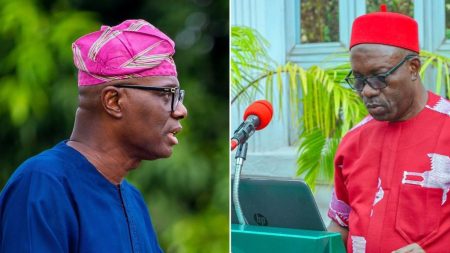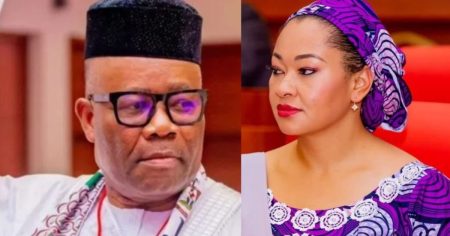Paragraph 1: The Arrest and Initial Discovery
In the hushed pre-dawn hours of a Tuesday in Makurdi, the Benue State capital, the tranquility of the Demekpe community was shattered by the clandestine activities of vandals targeting vital electrical cables. Alerted by suspicious noises, vigilant members of the community’s security watch sprang into action, apprehending three individuals in the act of dismantling and pilfering the electrical infrastructure. Among the captured suspects was an individual carrying what appeared to be a police identification card, bearing the name Innocent Ishaku, ID number 309976, and a corresponding photograph. The arrest quickly drew the attention of other community members, many of whom were fueled by outrage at the brazen act of sabotage.
Paragraph 2: Near Lynching and Police Intervention
The atmosphere at the scene of the arrest rapidly escalated as a crowd of incensed youth gathered, their anger at the vandals threatening to boil over into vigilante justice. The captured suspects faced the imminent peril of being set ablaze by the enraged mob, a fate narrowly averted by the swift intervention of the community’s vigilante group. Recognizing the potential for uncontrolled violence and the need to ensure due process, the vigilantes acted decisively, contacting the police at the D Division. Responding promptly to the call, police officers arrived at the scene, securing the suspects and escorting them away from the volatile situation.
Paragraph 3: Confirmation and Initial Investigation
Confirmation of the incident came from Dr. Adakole Elijah, Head of Corporate Communication at Jos Electricity Distribution, the utility company responsible for the affected electrical infrastructure. He acknowledged the arrest of the three individuals and affirmed the company’s intention to pursue legal action, stating that charges would soon be filed against the apprehended vandals. However, Dr. Elijah exercised caution regarding the alleged police officer’s identity, neither confirming nor denying the validity of the identification card found on one of the suspects. He pointed out that criminals often utilize counterfeit or stolen identification to mislead authorities and evade capture.
Paragraph 4: Attempts to Verify Police Involvement
Efforts to ascertain the authenticity of the police identification found on the suspect and clarify the possible involvement of a law enforcement officer in the vandalism incident proved challenging. Repeated attempts to contact DSP Udeme Edet, the spokesperson for the Benue State Police Command, went unanswered. Both phone calls to her mobile device and subsequent text messages seeking comment and information were met with silence. The lack of response from the police spokesperson left the question of police involvement unresolved and awaiting further investigation.
Paragraph 5: Community Impact and Reflection
The vandalism incident had a tangible impact on the Demekpe community, disrupting the supply of electricity and highlighting the vulnerability of essential public infrastructure. The near-lynching underscores the deep-seated frustration within the community regarding recurring incidents of vandalism and the perceived inadequacy of law enforcement responses. The alleged involvement of a police officer, if verified, would further erode public trust in the very institutions designed to protect citizens and uphold the law.
Paragraph 6: Looking Ahead: Justice and Accountability
The arrest of the three suspects and the subsequent investigation represent an opportunity to address the issue of vandalism and its impact on communities. The successful prosecution of the perpetrators would send a strong message that such acts will not be tolerated. Equally critical is a thorough investigation into the alleged involvement of a police officer, which, if proven, demands swift and decisive action to ensure accountability within the police force. The incident serves as a catalyst for strengthening community security measures, reinforcing the vital role of vigilante groups, and fostering greater collaboration between communities and law enforcement agencies in safeguarding public infrastructure.













